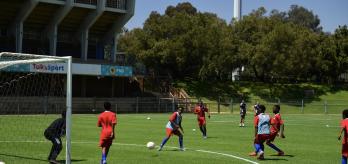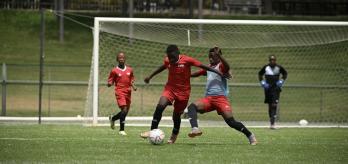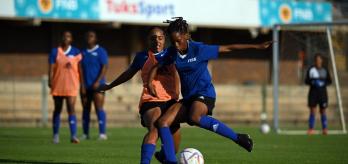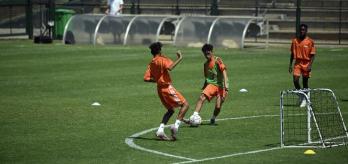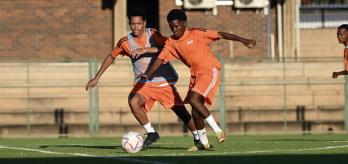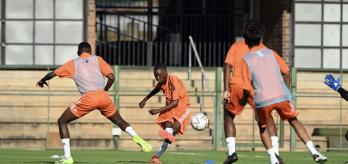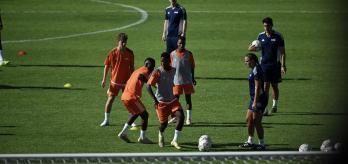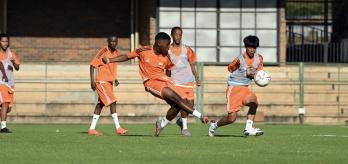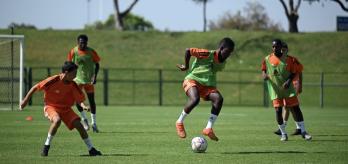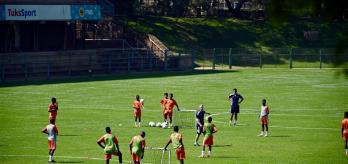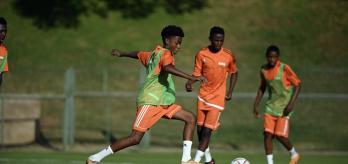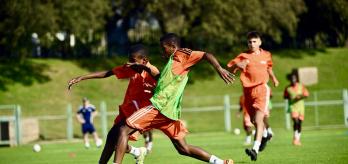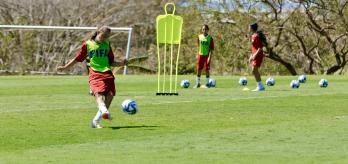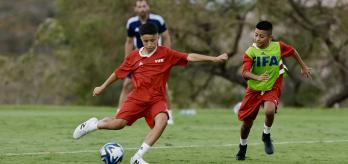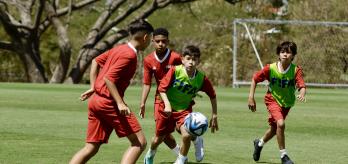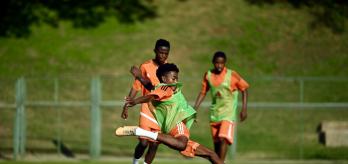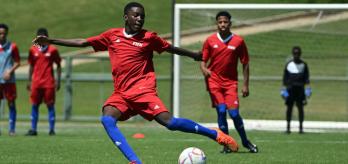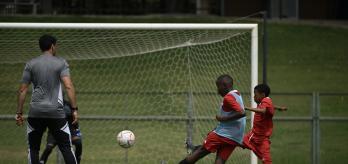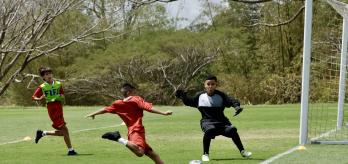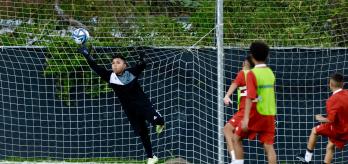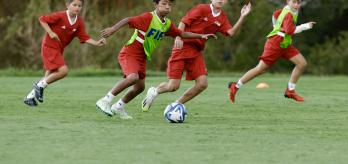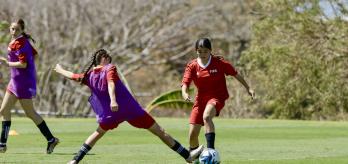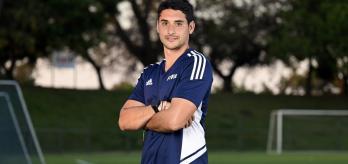Methodology
The intention: What is practised?
This attack v. defence game involves two-player combinations played through the central channel, with the attackers tasked with working together to overcome two lines of defence. The exercise focuses on unit-level aspects, such as playing one-twos, being on the same wavelength, creating passing lanes and reacting to a team-mate’s on-the-ball actions. If a player engages a defender, their team-mate must open up a passing lane with a view to eliminating the defender. Additionally, players must decide which is the most effective option between passing to a team-mate or dribbling towards the defender, and they should use their team-mate to trick the defender. If one of the players opts to take on a defender, their team-mate must recognise this and keep up with play to offer support.
The scale: For whom is this relevant?
This drill revolves around the unit scale and focuses on creating goalscoring chances by penetrating through the central channel. The game is particularly relevant to players who attack from deeper positions in central areas and are challenged with overcoming two lines of defence. The players involved could be two midfielders combining and making deep runs, or an attacker who drops to link up with a midfielder with a view to committing defenders and creating space between the defensive lines and in behind. The exercise is position-specific, with players asked to operate as central attackers who try to break into the penalty area.
The practice type: How is the practice designed?
This exercise involves an attack v. defence game that is initially contested in a reduced-sized area that becomes wider at the edge of the penalty area. The central channel funnels players through central areas and means that they are only able to combine in this area. The two zones simulate two defensive lines, and the immediate press applied by both defenders means that the attackers are tasked with progressing play and penetrating at pace. In the finishing zone, the players have greater room in which to operate, but the presence of the defender forces them to get a shot off quickly.
Session plan
Organisation
-
Use half of a full-size pitch.
-
Place a full-size goal at the opposite end to the halfway line.
-
Position a goalkeeper in the goal.
-
Travel 20m from the goal towards the halfway line and mark out a 20m x 15m area (the central channel).
-
Divide the 20m x 15m area in half widthways.
-
Split the group into two teams: 6 oranges and 4 blues.
-
Position 1 defender in each zone and the other 2 defenders outside 1 of the long sides of the area.
-
Place 3 attackers at each corner of the end of the area closest to the halfway line.
Explanation
-
The drill starts with 1 attacker from each corner entering the central channel, with 1 of them dribbling the ball that they are fed by a coach.
-
The attackers work together to beat the first defender and enter the second zone.
-
Once they enter the second zone, they combine again to overcome the second defender and advance towards goal before finishing as quickly as possible.
-
If they are beaten, the first defender becomes inactive, while the second defender remains active even if they are beaten and is able to track back to try to prevent a goal.
-
The offside rule applies once the ball leaves the central channel.
-
The players rotate after each attacking sequence has finished.
Variation
-
Players must dribble with the ball and cannot pass it to their team-mate immediately after entering the central channel.
Key coaching points
Roles of coaches
-
First coach: leads the exercise and coaches the players from their position on one of the long sides of the central channel.
-
Second coach: offers the players encouragement and feeds balls to the attacking players from their position in the middle of the end of the central channel closest to the halfway line.























